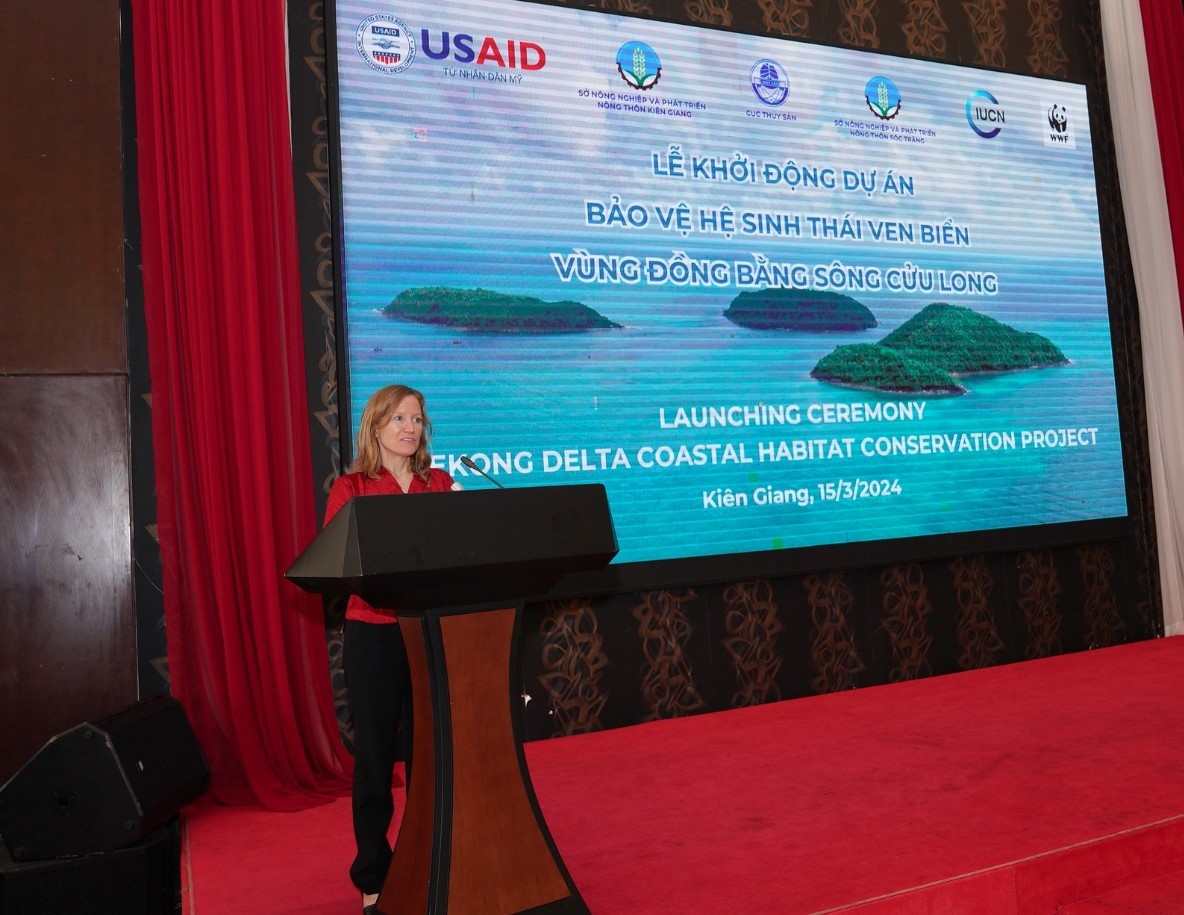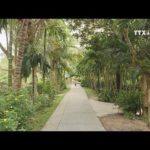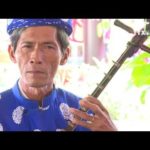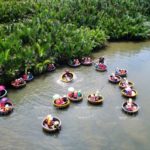The $2.9 million project aims to reduce threats to coastal biodiversity and fisheries and strengthen coastal resilience in the Mekong Delta. It is a partnership effort involving the Government of Vietnam, including provincial authorities, businesses, management boards of marine protected areas, development partners, and fishing communities.
“This project launch advances our shared priority with Vietnam to build coastal resilience in the vital yet increasingly vulnerable Mekong Delta region, and supports the U.S.-Vietnam Comprehensive Strategic Partnership,” stated Aler Grubbs, USAID/Vietnam Mission Director, during remarks delivered at the event.
 |
| USAID/Vietnam Mission Director delivering remarks at the event. (Photo: USAID/Vietnam) |
The Mekong Delta and its islands are home to 70% of Vietnam’s mangroves and 90% of its seagrass beds. These habitats are nourished by sediment and nutrients from the Mekong River, and they provide a rich fishing ground and important protection for coastal communities against storm surges.
However, these habitats and the commercially valuable species they support, like sea bass and snapper, are facing a range of threats that are affecting long-standing livelihoods and ways of life.
Through this new project, the United States will support Vietnam’s efforts to restore coastal biodiversity and sustainably manage marine resources. The project aims to reduce illegal, unreported, and unregulated fishing activities and enhance coastal resilience.
The project launch on March 15 reaffirms the U.S. commitment to increased engagement in the Mekong Delta and across Vietnam, in accordance with the shared priorities under the Comprehensive Strategic Partnership of our two countries.
Ancient village in Tien Giang province woes visitors
Dong Hoa Hiep village in Tien Giang province’s Cai Be district is home to many beautiful ancient houses that have contributed to the unique landscape of the Mekong delta.








